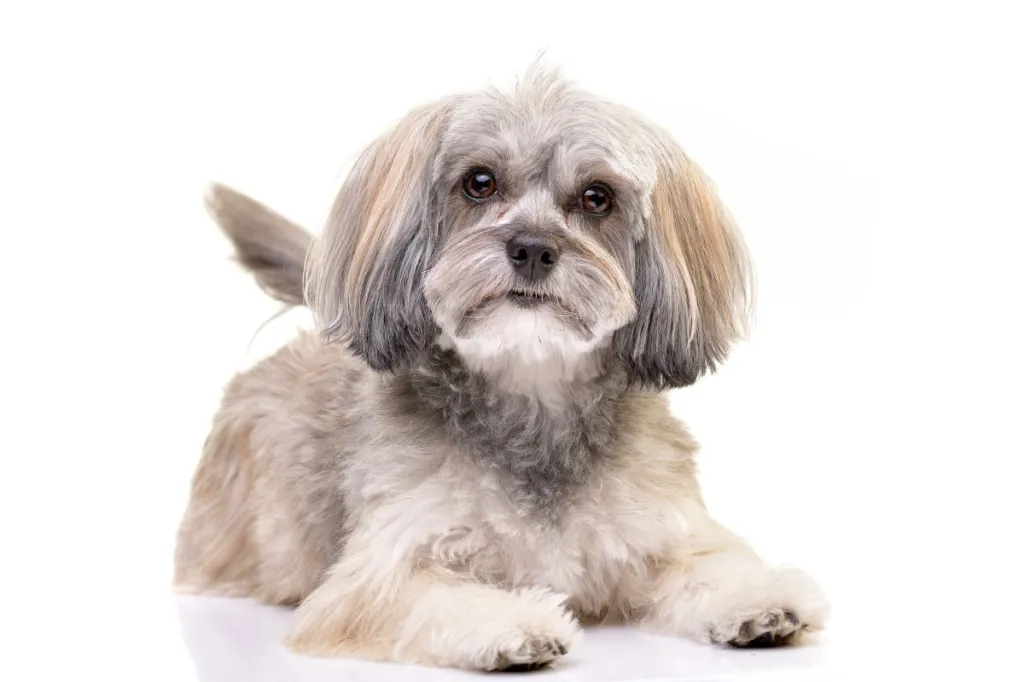The Havanese is a small toy dog breed from Cuba with a rounded face, floppy ears, and either curly or straight long hair. They have friendly, affectionate, and playful personalities. These dogs are very intelligent, easy to train, and have a low prey drive.
Havanese dogs originated in Cuba centuries ago. Spanish colonists brought the Bichon Tenerife to Cuba in the 1500s, and the Havanese is thought to have descended from this breed. They quickly became a popular pet among the Cuban upper class, and often given as gifts to visiting dignitaries. This breed remains the National Dog of Cuba.
The Silver Sable Havanese is a rare color variation of the Havanese dog breed. They have a long, silky coat that is mostly white with black or dark brown tipping. The tipping can be very heavy or very light, and the undercoat can be gold, red, fawn, chocolate, or silver. They are a relatively new color variation, and it is not yet recognized by all breed clubs. However, it is becoming increasingly popular among Havanese enthusiasts.
Havanese puppies can be rather expensive, costing between $600 to $1,800. If you’re able, please choose to adopt instead.
Quick Facts
- Origin: Cuba
- Size: Small
- Breed Group: Toy Group
- Lifespan: 14-16 years
- Coat: Long, silky, and soft double coat
- Temperament: Playful, affectionate, intelligent, and friendly
- Exercise Needs: Moderate exercise requirements; daily walks and playtime
- Training: Responds well to positive reinforcement and gentle training methods; can be a bit stubborn at times
- Grooming: Regular brushing and occasional professional grooming is required.
- Health: Generally healthy breed, but can be prone to certain genetic conditions like hip dysplasia, cataracts, and heart issues.
- Tennis star Venus Williams has a Havanese named “Harry.”
- The Havapoo is hybrid breed that consists of a cross between a Havanese and a Toy or Miniature Poodle.
Havanese Pictures
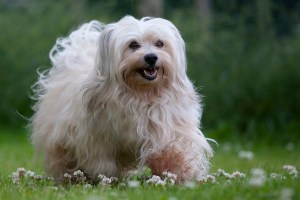
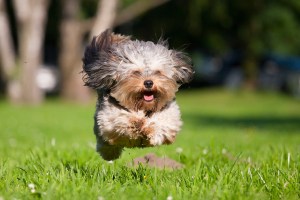
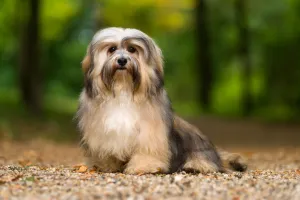
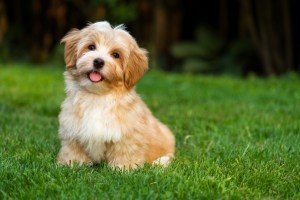
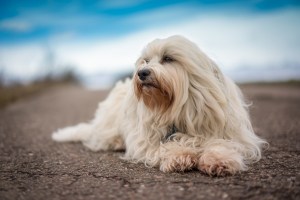
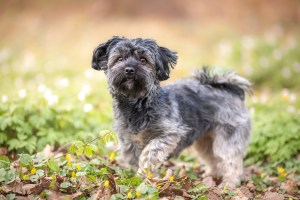
Adaptability
-
Adapts Well To Apartment Living
Looking for the best dog for your apartment? Contrary to popular belief, the suitability of dogs who adapt well to apartment living goes beyond its size. Apartment dwellers have a myriad of dog breeds to choose from as potential companions, with various factors to consider. Some large breeds can adapt well to apartment living and have lower activity levels. Others may require more space and possess higher energy levels. On the other hand, certain small dog breeds with abundant energy can still find contentment with indoor playtime or brisk walks.
However, when selecting a dog that adapts well apartments, it is essential to prioritize your neighbors. Opting for a pet that doesn’t excessively bark and behaves politely when encountering others in shared spaces like is crucial for maintaining a harmonious apartment environment.
In high-rise settings, it’s worth noting that numerous small dogs may exhibit a propensity for high energy and frequent barking. This makes them less suitable for apartment living. Therefore, desirable qualities in an apartment dog encompass being quiet, low-energy, and displaying polite behavior towards other residents.
Factors To Consider When Choosing A Dog For An Apartment
When considering dogs that adapt well to apartments, size alone should not be the sole determinant. Apartment dwellers have a wealth of dog breeds to choose from as potential furry companions. It’s important to remember that the size of your living space is just one factor to consider. While some larger breeds can adapt well to apartment living, with lower, others may require more space and have higher energy levels, making them less suitable for smaller apartments. Conversely, certain small dog breeds with higher energy levels can still thrive in apartments, finding contentment through indoor playtime or brisk walks. However, it is crucial to consider your neighbors’ comfort when selecting a dog. Opt for a pet that doesn’t bark excessively and behaves politely when interacting with others in shared spaces.
Therefore, it’s important to prioritize qualities such as being quiet, low-energy, calm indoors, and exhibiting good manners when living in close proximity to other residents. By considering these factors, you can find a dog that will adapt well to apartment living and create a harmonious living environment for everyone involved.
-
Good For Novice Owners
Some dogs are simply easier than others; they take to training better and are fairly easygoing. They’re also resilient enough to bounce back from your mistakes or inconsistencies.
Dogs who are highly sensitive, independent thinking, or assertive may be harder for a first-time dog parent to manage. You’ll get your best match if you take your dog-owning experience into account as you choose your new pooch.
If you’re new to dog parenting, take a look at 101 Dog Tricks and read up on how to train your dog!
-
Sensitivity Level
Some dogs will let a stern reprimand roll off their backs, while others take even a dirty look to heart. Low-sensitivity dogs, also called “easygoing,” “tolerant,” “resilient,” and even “thick-skinned,” can better handle a noisy, chaotic household, a louder or more assertive owner, and an inconsistent or variable routine. Do you have young kids, throw lots of dinner parties, play in a garage band, or lead a hectic life? Go with a low-sensitivity dog.
-
Tolerates Being Alone
Some breeds bond very closely with their family and are more prone to worry or even panic when left alone by their owner. An anxious dog can be very destructive–barking, whining, chewing, and otherwise causing mayhem. These breeds do best when a family member is home during the day or if you can take the dog to work.
-
Tolerates Cold Weather
Breeds with very short coats and little or no undercoat or body fat, such as Greyhounds, are vulnerable to the cold. Dogs with a low cold tolerance need to live inside in cool climates and should have a jacket or sweater for chilly walks. You can find a great jacket for your dog here!
-
Tolerates Hot Weather
Dogs with thick, double coats are more vulnerable to overheating. So are breeds with short noses, like Bulldogs or Pugs, since they can’t pant as well to cool themselves off. If you want a heat-sensitive breed, your dog will need to stay indoors with you on warm or humid days, and you’ll need to be extra cautious about exercising your dog in the heat.
All-around friendliness
-
Affectionate With Family
When it comes to unconditional love and unwavering loyalty, few animals can rival the affectionate nature of dogs. These remarkable creatures have earned their reputation as man’s best friend, and many breeds are particularly renowned for their love and devotion to their families. With their warm hearts and wagging tails, affectionate family dogs enrich the lives of their owners in countless ways.
One such breed known for its affectionate demeanor is the Golden Retriever. With their gentle temperament and friendly disposition, Golden Retrievers form deep bonds with their families. They eagerly participate in family activities, whether it’s a game of fetch in the yard or cuddling on the couch during a movie night. Their expressive eyes and ever-wagging tails are a testament to the joy they feel in the presence of their loved ones.
Another family-favorite breed is the Labrador Retriever. Renowned for their playful and patient nature, Labradors are excellent companions for children and adults alike. They readily engage in playtime with the kids, showcasing their boundless energy and enthusiasm. But when the day winds down, they seamlessly transition into loving and gentle cuddle buddies, comforting their family members with their warm presence.
Beyond specific breeds, mixed-breed dogs also have a special place in the hearts of families seeking affectionate companions. The shelter dogs, in particular, form deep connections with their adoptive families. They seem to understand the second chance they’ve been given and repay it with endless love and gratitude.
How To Know If A Dog Is Good With Families
The affectionate nature of family dogs extends beyond play and cuddles. Dogs have a remarkable ability to sense their owner’s emotions, offering comfort and support during difficult times. Whether it’s a wagging tail after a long day at work or a sympathetic nuzzle during moments of sadness, they prove time and again that they are attuned to their family’s needs.
It is important to note that not all dogs of the same breed will be equally affectionate. Some dogs may be more independent or aloof, while others may be more clingy or demanding of attention. The best way to find out how affectionate a dog is is to meet them in person and interact with them.
-
Kid-Friendly
Being gentle with children, sturdy enough to handle the heavy-handed pets and hugs they can dish out, and having a blasé attitude toward running, screaming children are all traits that make a kid-friendly dog. You may be surprised by who’s on that list: Fierce-looking Boxers are considered good with children, as are American Staffordshire Terriers (which are considered Pit Bulls). Small, delicate, and potentially snappy dogs such as Chihuahuas aren’t always so family-friendly.
**All dogs are individuals. Our ratings are generalizations, and they’re not a guarantee of how any breed or individual dog will behave. Dogs from any breed can be good with children based on their past experiences, training on how to get along with kids, and personality. No matter what the breed or breed type, all dogs have strong jaws, sharp pointy teeth, and may bite in stressful circumstances. Young children and dogs of any breed should always be supervised by an adult and never left alone together, period.
-
Dog Friendly
Friendliness toward dogs and friendliness toward humans are two completely different things. Some dogs may attack or try to dominate other dogs, even if they’re love-bugs with people; others would rather play than fight; and some will turn tail and run. Breed isn’t the only factor. Dogs who lived with their littermates and mother until at least six to eight weeks of age and who spent lots of time playing with other dogs during puppyhood, are more likely to have good canine social skills.
-
Friendly Toward Strangers
Stranger-friendly dogs will greet guests with wagging tails and nuzzles; others are shy, indifferent, or even aggressive. However, no matter what the breed, a dog who was socialized and exposed to lots of different types, ages, sizes, and shapes of people as a puppy will respond better to strangers as an adult. Remember that even friendly dogs should stay on a good, strong leash like this one in public!
Health And Grooming Needs
-
Amount Of Shedding
If you’re going to share your home with a dog, you’ll need to deal with some level of dog hair on your clothes and in your house. However, shedding does vary greatly among the breeds. Some dogs shed year-round, some “blow” seasonally, some do both, and some shed hardly at all. If you’re a neatnik, you’ll need to either pick a low-shedding breed or relax your standards. To help keep your home a little cleaner, you can find a great de-shedding tool here!
-
Drooling Potential
Drool-prone dogs may drape ropes of slobber on your arm and leave big, wet spots on your clothes when they come over to say hello. If you’ve got a laid-back attitude toward slobber, fine; but if you’re a neatnik, you may want to choose a dog who rates low in the drool department.
-
Easy To Groom
Some breeds are brush-and-go dogs; others require regular bathing, clipping, and other grooming just to stay clean and healthy. Consider whether you have the time and patience for a dog who needs a lot of grooming, or the money to pay someone else to do it.
-
General Health
Due to poor breeding practices, some breeds are prone to certain genetic health problems, such as hip dysplasia. This doesn’t mean that every dog of that breed will develop those diseases; it just means that they’re at an increased risk.
If you’re adopting a puppy, it’s a good idea to find out which genetic illnesses are common to the breed you’re interested in. You may also want to ask if your shelter or rescue has information about the physical health of your potential pup’s parents and other relatives.
-
Potential For Weight Gain
Some breeds have hearty appetites and tend to put on weight easily. As in humans, being overweight can cause health problems in dogs. If you pick a breed that’s prone to packing on pounds, you’ll need to limit treats, make sure they get enough exercise, and measure out their daily food servings into regular meals rather than leaving food out all the time.
Ask your vet about your dog’s diet and what they recommend for feeding your pooch to keep them at a healthy weight. Weight gain can lead to other health issues or worsen problems like arthritis.
-
Size
Get ready to meet the giants of the doggy world! Large dog breeds aren’t just big balls of fluff, they’re like loving, oversized teddy bears on a mission to steal your heart. Need some convincing? Let’s dive into the awesome benefits of owning one!
First things first, these pooches are a living security system! With their impressive size and thunderous barks, they’ll have any would-be intruder running for the hills. Talk about peace of mind! Plus, who needs an alarm when you’ve got a furry giant protecting your castle?
But that’s not all. Large dog breeds are all about loyalty and devotion. They’ll stick by your side through thick and thin, becoming your most dedicated bestie. Their love knows no bounds! When you have a giant fluffball showing you unconditional love, you’ll feel like the luckiest human on the planet.
Now, let’s talk about their talents. These big fellas are the ultimate working partners. With brains and brawn, they’re up for any challenge. From search and rescue missions to lending a helping paw to those in need, these dogs are superheroes in fur coats. They’ll make you proud every step of the way!
Don’t let their size fool you—these gentle giants have hearts as big as their paws. They’re incredible with kids and other pets, spreading their love like confetti. Their patience and kindness make them perfect family pets, ensuring harmony in your household.
Oh, and get ready to break a sweat! These dogs are fitness enthusiasts, and they’ll keep you on your toes. Daily walks, jogs, and play sessions will not only keep them happy and healthy but will also give you a reason to ditch the couch and join in on the fun. It’s a win-win situation!
So, if you’re ready for a dose of big love, go ahead and consider a large dog breed. They’re the best wing-dog you could ever ask for, ready to make your life a thousand times more exciting, loving, and downright awesome! Get ready for the big adventure of a lifetime!
Trainability
-
Easy To Train
Easy-to-train dogs are more adept at forming an association between a prompt (such as the word “sit”), an action (sitting), and a consequence (getting a treat) very quickly. Other dogs need more time, patience, and repetition during training.
Many breeds are intelligent but approach training with a “What’s in it for me?” attitude, in which case you’ll need to use rewards and games to teach them to want to comply with your requests.
Related:
10 Fun, Impressive Tricks You Can Teach Any Dog
-
Intelligence
Dogs who were bred for jobs that require decision making, intelligence, and concentration, such as herding livestock, need to exercise their brains, just as dogs who were bred to run all day need to exercise their bodies. If they don’t get the mental stimulation they need, they’ll make their own work–usually with projects you won’t like, such as digging and chewing. Obedience training and interactive dog toys are good ways to give a dog a brain workout, as are dog sports and careers, such as agility and search and rescue.
-
Potential For Mouthiness
Common in most breeds during puppyhood and in Retriever breeds at all ages, mouthiness means a tendency to nip, chew, and play-bite (a soft, fairly painless bite that doesn’t puncture the skin). Mouthy dogs are more likely to use their mouths to hold or “herd” their human family members, and they need training to learn that it’s fine to gnaw on chew toys, but not on people. Mouthy breeds tend to really enjoy a game of fetch, as well as a good chew on a toy that’s been stuffed with kibble and treats.
-
Prey Drive
Dogs with a high prey drive have an instinctive desire to stalk, capture, and prey upon potential food sources. Dogs who were bred to hunt, such as Terriers, have an inborn desire to chase — and sometimes kill — other animals. Anything whizzing by — such as cats, squirrels, and perhaps even cars — can trigger that instinct.
How to address a high prey drive
Off-leash adventures are too great a temptation for pups who will wander and hunt. Dogs who like to chase need to be leashed. And, even on a leash, you may experience your dog pulling on the leash to reach rodents or birds in their sight. Otherwise, these pups should be kept in a fenced area when outdoors. If your pup has a high prey drive, you’ll need a high, secure fence in your yard.
These breeds generally aren’t a good fit for homes with smaller pets that can look like prey, such as cats, hamsters, or small dogs. Breeds that were originally used for bird hunting, on the other hand, generally won’t chase, but you’ll probably have a hard time getting their attention when there are birds flying by.
Other behavioral concerns
Observing your dog’s prey drive, which is instinctual and biologically-rooted, is not the same as observing aggression. Much aggression is born of fear and anxiety, especially in the case of dog aggression toward humans.
The tendency to wander, even into oncoming traffic, can produce diasterious results for pups with predatory instincts. It can also lead to pups being bitten by snakes or attacked by other wild animals they may pursue while on the hunt.
-
Tendency To Bark Or Howl
Some breeds sound off more often than others. When choosing a breed, think about how often the dog vocalizes. Learn more about breeds with a tendency to bark or howl.
If you’re considering a hound, would you find their trademark howls musical or maddening? If you’re considering a watchdog, will a city full of suspicious “strangers” put your pup on permanent alert? Will the local wildlife literally drive your dog wild? Do you live in housing with noise restrictions? Do you have neighbors nearby? Then you may wish to choose a quieter dog.
-
Wanderlust Potential
Some breeds are more free-spirited than others. Nordic dogs such as Siberian Huskies were bred to range long distances, and given the chance, they’ll take off after anything that catches their interest. And many hounds simply must follow their noses–or that bunny that just ran across the path–even if it means leaving you behind.
Exercise needs
-
Energy Level
High-energy dogs are always ready and waiting for action. Originally bred to perform a canine job of some sort, such as retrieving game for hunters or herding livestock, they have the stamina to put in a full workday. They need a significant amount of exercise and mental stimulation, and they’re more likely to spend time jumping, playing, and investigating any new sights and smells.
Low-energy dogs are the canine equivalent of a couch potato, content to doze the day away. When picking a breed, consider your own activity level and lifestyle, and think about whether you’ll find a frisky, energetic dog invigorating or annoying.
-
Intensity
A vigorous dog may or may not have high energy, but everything they do, they do with vigor: they strain on the leash (until you train them not to), try to plow through obstacles, and even eats and drinks with great big gulps. These dynamos need lots of training to learn good manners, and may not be the best fit for a home with young kids or someone who’s elderly or frail. A low-vigor dog, on the other hand, has a more subdued approach to life.
-
Exercise Needs
Some breeds do fine with a slow evening stroll around the block. Others need daily, vigorous exercise, especially those that were originally bred for physically demanding jobs, like herding or hunting.
Without enough exercise, these breeds may put on weight and vent their pent-up energy in ways you don’t like, such as barking, chewing, and digging. Breeds that need a lot of exercise are good for outdoorsy, active people, or those interested in training their dog to compete in a high-energy dog sport, such as agility.
-
Potential For Playfulness
Some dogs are perpetual puppies — always begging for a game — while others are more serious and sedate. Although a playful pup sounds endearing, consider how many games of fetch or tag you want to play each day, and whether you have kids or other dogs who can stand in as playmates for the dog.
Havanese Overview
The Havanese shines his affectionate personality on everyone, including strangers, children, other dogs, and even cats. But his family will get the lion’s share of his love; given the choice, he’ll stick like glue to his owner’s side. The potential downside to all this devotion is that, when left alone, the Havanese can become anxious.
This is definitely a housedog, and a Havanese who’s left in the backyard — or anywhere away from his family — is not a happy dog. His Velcro personality isn’t so surprising, considering he was bred to keep the wealthy families of his native island of Cuba company. Since then, however, the Havanese has proven that he’s good for much more than warming laps.
Havanese dogs are quite trainable, and they’ve worked as therapy and assistance dogs, sniffed out mold and termites, and shown off their clownish antics as performing dogs. They’ve also got a surprising amount of energy for their size, and for the family looking to compete, the Havanese will happily tackle such sports as agility, freestyle, obedience, and flyball.
As with many small dogs, it’s common for adoring owners to overindulge their Havanese. They’ll probably regret it — bad habits, such as eating only people food, can form very quickly. This breed is a sharp con artist, and you may find that your Havanese is training you, rather than the other way around. In spite of his quirks, or maybe even because of them, the Havanese is a wonderful and versatile pet.
Havanese Highlights
- Friendly and affectionate: Havanese are known for being very friendly and affectionate dogs. They love to be around people and make great companions for families with children.
- Intelligent and easy to train: Havanese are also very intelligent and easy to train. They are eager to please their owners and love to learn new tricks.
- Low-maintenance coat: The Havanese has a long, silky coat that requires regular grooming. However, the coat can be trimmed or clipped to make it more manageable.
- Adaptable: Havanese are very adaptable dogs and can live in apartments or homes with small yards. They are also good for people who are active or not as active.
- Good with children and other pets: Havanese are good with children and other pets. They are gentle and playful and make great family dogs.
- Long lifespan: Havanese have an average lifespan of 14 to 16 years. This means that they can be a long-term companion for their owners.
Overall, the Havanese is a wonderful breed of dog that makes a great addition to any family. They are loving, playful, and intelligent companions that will bring years of joy to their owners.
Havanese History
After Columbus claimed Cuba for Spain in 1492, Spanish settlers began arriving on the island. With them came their small companion dogs — the ancestors of what’s now the Bichon family of dogs. These dogs interbred and — isolated from other dogs by island life, and later, by trade restrictions imposed on Cuba by Spain — they began to develop into the Havanese we know today.
Their signature coat was thick and silky, which helped insulate the dog from the tropical sun (the coat is like raw silk floss, profuse, but extremely light and soft, and insulates against the tropical rays in much the same way that yards of silk sari protect the women of India). By the early 1800s, Havanese were gracing the laps of many aristocratic families in Cuba.
European travelers who became enamored with the breed brought dogs back to England, Spain, and France. The breed became trendy in Europe in the mid-1800s, and Queen Victoria and Charles Dickens were among his well-known fans at the time. Like most breed trends, this one petered out. At one point the Havanese became almost extinct, even in his native Cuba. A few Cuban families still bred and kept the dogs, however, and with the Cuban Revolution in 1959, 11 Havanese were brought to the U.S. in the arms of their owners.
These canine refugees are the ancestors of most of the Havanese outside of Cuba today. The renaissance of the breed began in the 1970s,when an American couple who bred dogs found a few descendents of the 11 dogs who were brought from Cuba. Charmed by their intelligence and affectionate nature, they began tracking down other Havanese and working to reestablish the breed. Because most Havanese outside of Cuba today can trace their ancestry to just 11 dogs, breeders are working to widen the gene pools of the American-bred Havanese. The American Kennel Club officially recognized the breed in 1995.
Havanese Size
Males and females stand 8 1/2 to 11 1/2 inches tall, and weigh 7 to 13 pounds.
Havanese Personality
The Havanese is a gentle and affectionate breed that thrives on human companionship. Your Havanese will often follow you from room to room throughout the day, and he can get very anxious when left alone. He’s intelligent as well, and will enjoy making you laugh with goofy antics, or simply sitting on your lap watching the world go by.
Temperament is affected by a number of factors, including heredity, training, and socialization. Puppies with nice temperaments are curious and playful, willing to approach people and be held by them. Choose the middle-of-the-road puppy, not the one who’s beating up his littermates or the one who’s hiding in the corner. Always meet at least one of the parents — usually the mother is the one who’s available — to ensure that they have nice temperaments that you’re comfortable with.
Meeting siblings or other relatives of the parents is also helpful for evaluating what a puppy will be like when he grows up. Like every dog, the Havanese needs early socialization — exposure to many different people, sights, sounds, and experiences — when they’re young. Socialization helps ensure that your Havanese puppy grows up to be a well-rounded dog.
Enrolling him in a puppy kindergarten class is a great start. Inviting visitors over regularly, and taking him to busy parks, stores that allow dogs, and on leisurely strolls to meet neighbors will also help him polish his social skills.
Havanese Health
Havanese are generally healthy, but like all breeds, they’re prone to certain health conditions. Not all Havanese will get any or all of these diseases, but it’s important to be aware of them if you’re considering this breed. If you’re buying a puppy, find a good breeder who will show you health clearances for both your puppy’s parents.
- Hip Dysplasia: Hip dysplasia is a degenerative disease in which the hip joint is weakened due to abnormal growth and development. This disease is found in many breeds of dogs. Although it’s a genetic disease that breeders screen for, it can show up in a puppy born to parents free of the disease. Treatments include medication, weight loss if the dog is overweight, nutritional supplements, and sometimes surgery.
- Elbow Dysplasia: Elbow dysplasia is similar to hip dysplasia; it’s a degenerative disease that affects the elbow joint. It’s believed to be caused by abnormal growth and development, causing the joint to be malformed and weakened. The disease varies in severity; some dogs only develop a little stiffness, others become lame. The treatment is surgery, weight management, and medication.
- Chondrodysplasia: This is a genetic disorder that’s commonly mislabeled as “dwarfism.” Affected dogs have abnormally short limbs for the breed. This can range in severity from nearly normal to crippling. In less severe cases, dogs can live full and healthy lives, but any dog with this disorder should not be bred.
- Legg-Perthes Disease: Legg-perthes causes a deformity of the hip joint ball. It starts with a decrease in the blood supply to the head of the femur bone, until the bone eventually dies off, collapses, and becomes deformed. The result is arthritis or inflammation of the hip joint. It’s unclear what causes legg-perthes, but it may be inherited or injury related. Treatment includes rest, physical therapy, and surgically removing the deformed femoral head and neck. Dogs generally do well after the surgery, and many suffer only minor lameness, particularly during weather changes.
- Cataracts: A cataract is opacity on the lens of the eye, which causes vision loss. The affected eye has a cloudy appearance. It is an inherited disease and usually occurs with old age, but can occur at any age. Cataracts are treated by surgical removal.
- Deafness: Deafness provides many challenges for both the dog and the owner. Some forms of deafness and hearing loss can be treated with medication and surgery, but deafness usually cannot be cured. Patience and time must be given to a deaf dog and there are many products on the market, such as vibrating collars, to make life easier for you both.
- Patellar Luxation: Also known as a “trick knee,” patellar luxation is a common problem in small dogs. It is caused when the patellia, which has three parts — the femur (thigh bone), patella (knee cap), and tibia (calf) — is not properly lined up. This causes lameness or an abnormal gait. Treatment for patellar luxation is usually surgery.
- Portosystemic Shunt: A portosystemic shunt is an abnormal blood flow where the blood from the digestive tract bypasses the liver and continues to the systemic venous circulation. When this occurs, toxins that are normally removed by the liver are circulated through the body leading to other diseases, such as hepatic encephalopath. Portosystemic shunts usually occur in conjunction with another disease and symptoms include poor balance, loss of appetite, lethargy, blindness, depression, weakness, seizures, disorientation, and coma. A change in diet and surgery can help treat the problem.
- Heart Murmur: A disturbance in the blood flow is the cause of heart murmurs. There are five grades of heart murmurs; they are graded on how audible the murmur is. Heart murmurs are an indicator of disease; treatment is necessary, which can include medication, special diet, and exercise restrictions.
- Mitral Valve Insufficiency: Mitral valve insufficiency is more commonly seen in older dogs when the mitral valve, which is found between the left atrium and ventricle, begins to fail. When this happens, the mitral valve fails to prevent the flow of blood into the left atrium. This can cause heart failure. Symptoms include hypertension, fluid in the lungs, and a decrease in strength of the heart muscle. Treatment includes medication, change of diet, and exercise restrictions.
Havanese Care
Although the Havanese is a small breed, he has a fair amount of energy to burn. A lengthy walk or an active game of fetch each day will keep him happy. The Havanese does well in a variety of homes, from apartments to large homes with yards — as long as he’s an indoor dog. This breed isn’t suited for life in the backyard.
He is happiest when he is with his family. Although they’re not overly yappy, they do bark at passersby, so if your home has noise restrictions, this may not be the breed for you. His eagerness to please his owners makes the Havanese fairly easy to train in most cases. Basic obedience, beginning with puppy classes, is recommended.
Housetraining, however, can be particularly challenging for a Havanese, so you’ll need to be especially patient during this process.
You’ll get there, but crate training is a must. Separation anxiety can be a serious concern for the Havanese and his owner. The best way to deal with this problem is to avoid it altogether. Don’t leave the dog alone for long periods of time and, when you do leave, put him in a crate with plenty of sturdy toys to keep him occupied. Though he’s small and fuzzy, a Havanese isn’t a toy. Like all breeds, he needs to learn good canine manners. Don’t spoil him with table scraps or by carrying him all the time he’ll get fat or become overly possessive of you.
Havanese Feeding
Recommended daily amount: 1/2 to 1 cup of high-quality dry food a day, divided into two meals. NOTE: How much your adult dog eats depends on his size, age, build, metabolism, and activity level. Dogs are individuals, just like people, and they don’t all need the same amount of food. It almost goes without saying that a highly active dog will need more than a couch potato dog.
The quality of dog food you buy also makes a difference — the better the dog food, the further it will go toward nourishing your dog and the less of it you’ll need to shake into your dog’s bowl. Keep your Havanese in good shape by measuring his food and feeding him twice a day rather than leaving food out all the time.
If you’re unsure whether he’s overweight, give him the eye test and the hands-on test. First, look down at him. You should be able to see a waist. Then place your hands on his back, thumbs along the spine, with the fingers spread downward. You should be able to feel but not see his ribs without having to press hard. If you can’t, he needs less food and more exercise. For more on feeding your Havanese, see our guidelines for buying the right food, feeding your puppy, and feeding your adult dog.
Havanese Coat Color And Grooming
The Havanese coat is thick but silky, soft, and light, and it doesn’t shed easily. The coat is long and ranges from straight to curly, although wavy is considered the ideal for the show ring. It comes in white, black, black and tan, sable, gray, and a myriad of other colors and markings.
Many owners clip the Havanese coat short to make it easier to care for. But if you show your Havanese — or just want to look like you do — you’ll have to keep it long, and should expect to do a lot of grooming. When kept long, the coat needs daily brushing to prevent mats from forming, and frequent baths to keep it clean. In general, it’s wise to keep the hair above the eyes tied up to prevent irritation — it looks cute, too.
Unless you’re highly motivated and skilled, you’re probably better off with a professional groomer. Owners can learn to groom their dogs, but it takes a dedicated person to keep this breed’s coat in good shape. Watery eyes and resulting tearstains are common in the Havanese. Keep in mind that excessive tearing can signal an eye problem and should be checked by a veterinarian.
However, most tearstains are not serious, and the cause is simply unknown. You can improve the stained look by keeping the hair around the eyes clean (wipe daily with a damp cloth). There are whitening products on the market made specifically for lightening the stains, which some owners find helpful. Brush your Havanese’s teeth at least two or three times a week to remove tartar buildup and the bacteria that lurk inside it. Daily brushing is even better if you want to prevent gum disease and bad breath.
Trim nails once or twice a month if your dog doesn’t wear them down naturally. If you can hear them clicking on the floor, they’re too long. Short, neatly trimmed nails keep the feet in good condition and prevent your legs from getting scratched when your Havanese enthusiastically jumps up to greet you. Begin accustoming your Havanese to being brushed and examined when he’s a puppy.
Handle his paws frequently — dogs are touchy about their feet — and look inside his mouth and ears. Make grooming a positive experience filled with praise and rewards, and you’ll lay the groundwork for easy veterinary exams and other handling when he’s an adult. As you groom, check for sores, rashes, or signs of infection such as redness, tenderness, or inflammation on the skin, in the ears, nose, mouth, and eyes, and on the feet. Eyes should be clear, with no redness or discharge. Your careful weekly exam will help you spot potential health problems early.
Havanese Children And Other Pets
The Havanese is an excellent family dog who’s affectionate with everyone, including kids of all ages and other dogs and pets. But because he’s so small, he could easily get hurt by accident, so it’s especially important to teach kids how to treat the dog.
You should always teach children how to approach and touch dogs, and always supervise any interactions between dogs and young children to prevent any biting or ear or tail pulling on the part of either party. Teach your child never to approach any dog while he’s eating or sleeping or to try to take the dog’s food away. No dog, no matter how friendly, should ever be left unsupervised with a child.
Havanese Rescue Groups
Havanese are often purchased without any clear understanding of what goes into owning one. There are many Havanese in need of adoption and or fostering. There are a number of rescues that we have not listed. If you don’t see a rescue listed for your area, contact the national breed club or a local breed club and they can point you toward a Havanese rescue.
Havanese Breed Organizations
Finding a reputable dog breeder is one of the most important decisions you will make when bringing a new dog into your life. Reputable breeders are committed to breeding healthy, well-socialized puppies that will make great companions. They will screen their breeding stock for health problems, socialize their puppies from a young age, and provide you with lifetime support.
On the other hand, backyard breeders are more interested in making a profit than in producing healthy, well-adjusted dogs. They may not screen their breeding stock for health problems, and they may not socialize their puppies properly. As a result, puppies from backyard breeders are more likely to have both health and behavioral issues.
